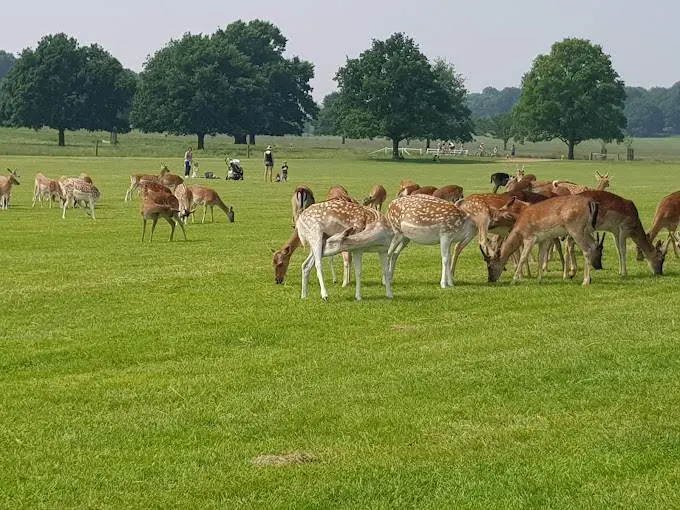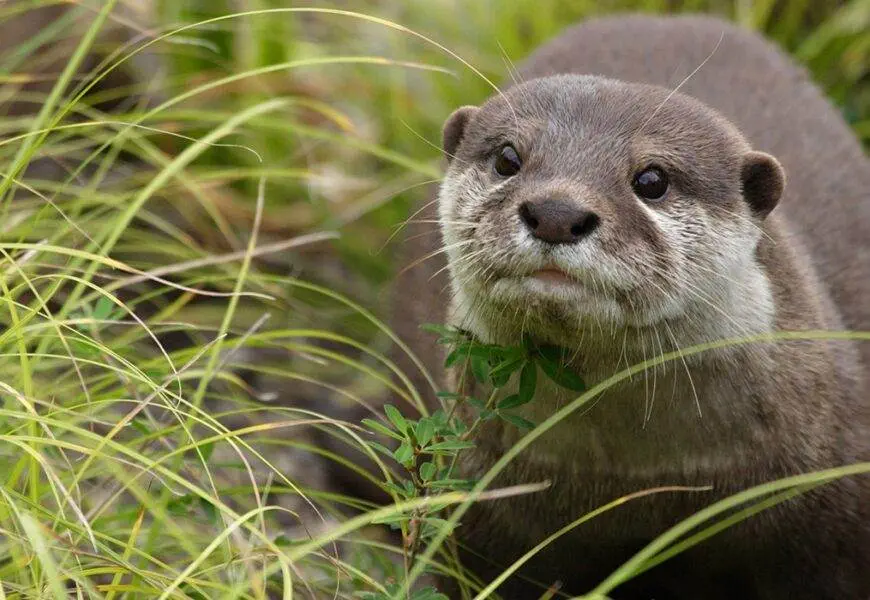The Top 10 Wildlife Viewing Locations In London This Summer
Yes, we’ve all seen those raggedy foxes strolling around our lovely city streets in need of a good wash. But London is home to considerably more than foxes. There’s lots to see in our beloved city, from peregrine falcons to grass snakes, red deer to tawny owls. So, without further ado, here are the best places to spot wildlife this summer.
Greenwich Park, Greenwich
Greenwich Park, officially one of the most beautiful parks in the United Kingdom, is a historic hunting park of King Henry VIII and the oldest of London’s eight Royal Parks. It’s a tranquil, Grade I-listed area with vast boulevards, flower-filled gardens, wildlife-rich meadows, and historic spots dating back to Roman times. It’s definitely worth a visit whenever you’re in SE10.
It’s not just one of the best sites in town to watch the sunset (or sunrise if you’re an early bird), but it’s also home to a diverse range of historic trees that serve as perfect nesting grounds for species such as tawny owls, woodpeckers, thrushes, and warblers. It also has pipistrelle bats and over 92 different spider species – wow!
You’ll find Greenwich Park at SE10 8QY.
Nearest stations are Cutty Sark DLR and Greenwich.
WWT Wetland London Centre, Barnes

The WWT London Wetland Centre, located on the site of four decommissioned Victorian reservoirs in Barnes, West London, offers 105 acres of open space and wetlands to explore. The bittern, one of the UK’s most elusive breeding birds, lives at the centre, as do the exceedingly uncommon Leisler’s bat and Nathusius’ pipistrelle bat.
Other attractions include Asian short-clawed otters, the smallest of the 13 otter species worldwide, which may be found frolicking and swimming around in the ‘Wetlands of the World’ display complex. They also have a fantastic lit light trail during the holiday season, making it ideal for families!
The WWT Wetland London Centre is located at Queen Elizabeth Walk, Barnes, London, SW13 9WT.
Nearest stations are Barnes and Barnes Bridge.
Sydenham Hill Wood, Dulwich
Sydenham Hill Wood, a tranquil corner of South East London designated as a Site of Metropolitan Importance for Nature Conservation and managed by the London Wildlife Trust, kicks off this roundup of the greatest places to view wildlife in London.
It’s the only remaining tract of the ancient Great North Wood, and it’s a nice area for some peace and quiet away from the hustle and bustle of the city. Follow the well-marked trails here to see if you can find the local tawny owls, green woodpeckers, kestrels, wood mice, stag beetles, and hedgehogs.
Sydenham Hill Wood is located at 5 Peckarmans Wood, London, SE26 6RY.
Forest Hill is the closest station.
Walthamstow Wetlands, Walthamstow
The Walthamstow Wetlands are next on our list of the finest locations to see wildlife in London, with thirteen miles of trails and numerous gorgeous reservoirs.
As London’s largest nature reserve and a Site of Special Interest (SSI), it is home to a diverse range of wildlife species, including kingfishers, herons, peregrine falcons, and bank voles, as well as invertebrates like damselflies, dragonflies, speckled wood butterflies, and thick-kneed beetles. The only drawback is that dogs are not permitted, so you’ll have to look elsewhere for your daily fix of floofs, puppers, and four-legged companions.
The Walthamstow Wetlands are located at 286 Blackhorse Lane, London, E17 5QH.
Blackhorse Road is the closest station.
Richmond Park, Richmond
Richmond Park, a wandering, wild-feeling deer park on the fringes of South-West London, is the second largest park in London and is practically brimming with nature items. This is one of the best places to spot wildlife in London.

It’s a beautiful conservation area worth visiting, with wide meadows and woodland trails that are appealing all year. There are about 600 resident deer here, so if you cover enough ground, you should see some. Shrews, mice, voles, bats, kestrels, and a variety of waterfowl are also found here. Don’t miss out on exploring the Isabella Plantation, which is located right in the centre of the park and features vibrantly coloured flower beds, gurgling streams, hidden walkways, and picnic-friendly meadows.
Richmond Park is located at Richmond Park, Surrey, TW10 5HS.
Richmond and North Sheen are the closest station.
Tate Modern, Bankside
This may come as a surprise to you. The Tate Modern, housed inside the ancient Bankside Power Station and distinguished by a 325-foot-tall chimney tower, is one of London’s most imposing structures, making it difficult to imagine any wildlife living there. Let alone desire to! You’d be wrong, because this landmark structure is a preferred haunt of the world’s fastest animal.
There are no cheetahs or sailfish in this area. We’re talking about the peregrine falcon, which can divebomb at speeds of more than 200 miles per hour. What, no slowcoaches here? London boasts the world’s second-highest urban peregrine population, trailing only New York City, and the Tate Modern chimney has been home to a pair for well over a decade. There are also pairs nesting in the Battersea Power Station and the Houses of Parliament, which is rather impressive.
The Tate Modern is located at Bankside, London, SE1 9TG.
Blackfriars and Southwark are the closest stations.
Alexandra Park, Haringey
Alexandra Park is a multi-award-winning park in North London, best known for being the site of the enormous Alexandra Palace. The twisting roads and panoramic views of the city ensure that this place will be gorgeous no matter what the weather—especially if you’re lucky enough to catch the sun rising or setting.
It’s also the location of Kaleidoscope, one of the best London events taking place this summer, and they have 196 acres of open space for you to get away from the hustle and bustle of daily life. In terms of wildlife, Ally Pally Park has 694 different varieties of plants, animals, and fungus, including 212 different types of insects and 26 different forms of arachnids! Add in thousands of bats, which congregate around the boating lake at twilight, and you can see why this is one of the best spots to observe wildlife in London.
Alexandra Park is located at Alexandra Palace Way, London, N22 7AY.
Alexandra Palace and Wood Green are the closest stations.
Epping Forest, Loughton
A slightly longer-than-usual travel down the Central Line to the outskirts of Essex gets you straight to the edge of Epping Forest, London’s largest open space with a plethora of lakes, rivers and tree-lined trails.
The area, which is both a location of Special Scientific Interest (SSSI) and a Special Area of Conservation (SAC), is home to 55,000 ancient trees, more than any other single location in the UK, some of which have been grown here since Anglo-Saxon times! As you might think, there’s a lot of wildlife here, ranging from birds like buzzards, sparrowhawks, and jays to reptiles like adders and grass snakes.
With species like muntjac deer and weasels, it’s easy to see why we’ve included Epping Forest on this list.
Epping Forest is located in Essex at CM16.
Loughton and Theydon Bois are the closest stations.
RSPB Rainham Marshes, Purfleet
Okay, so this next location isn’t strictly in London; it’s in Essex, but since it’s within the M25, we felt we’d add it. It’s a large swath of marshes, grassy shrubland, and ditches that was once a military shooting range but is now a wildlife paradise for marsh harriers, barn owls, short-eared owls, kingfishers, lapwings, golden plovers, tiny egrets, peregrine falcons, and uncommon water voles.
It’s an excellent spot to observe migrating birds as they arrive or fly away over the winter months, and it’s run by the RSPB and open all year. Keep a watch out for weasels and stoats, as well as grass snakes!
The RSPB Rainham Marshes are located at New Tank Hill Road, Purfleet, RM19 1SZ.
Purfleet is the nearest station.
Holland Park, Kensington and Chelsea
Holland Park, a pleasant site in Kensington and Chelsea that comprises roughly 22 hectares with a northern half of semi-wild woods, a central piece of groomed gardens, and a southernmost section devoted for sport, is our final contribution to this compilation of the greatest spots to observe wildlife in London.
Make a beeline for the lovely Kyoto Garden, an oasis of peace right in the centre of the park. There’s a wonderful water feature and a pond with koi carp, but there’s also a roving muster of peacocks (yes, that is the collective noun for a bunch of peacocks, in case you were wondering). These colourful and exotic birds are simple to detect, and you might even spot a heron here.
Holland Park is located at Ilchester Place, London, W8 6LU.
Notting Hill Gate and Holland Park are the closest stations.
So there you have it – a list of the top sites in London to see animals. From peacocks in Holland Park to peregrine falcons and water voles in the Walthamstow Wetlands, our beautiful capital is teeming with wildlife, so get out and explore!
Make sure to bookmark simplyexplained.co.uk to explore more quality content.






